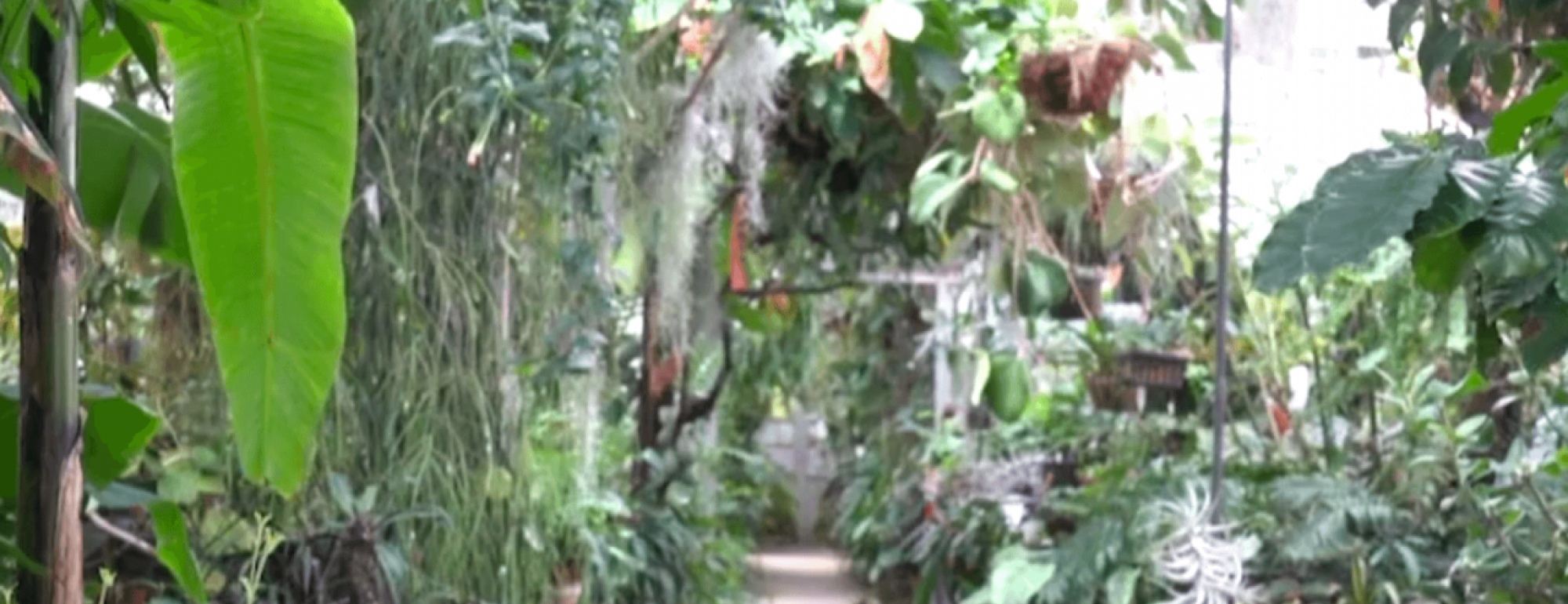There's something about that first satisfying snap into a bite of chocolate that can transport a person somewhere like no other candy can. From the tropical regions that grow cacao to the companies that produce the confections we see in the store, that chocolate had to make a journey of its own, as well. Farmers and scientists from around the world will soon be able to connect at UC Davis to ensure growing a fragile bean into one of the world’s most prolific foods endures for generations to come.
UC Davis students and experts are working to better understand cacao, a vital ingredient necessary not only to chocolate production but also to many people worldwide. A part of the pursuit is sharing knowledge to better understand the complex challenges and issues in the wide world of chocolate production.
As diverse as cacao is, so too, is the research surrounding it at UC Davis.
“We’re so used to going to our local grocery store, buying a bar of chocolate that is produced in North America or Europe and feeling that distance from where the cacao is actually growing, which tends to be in tropical regions of the world, typically north and south of the equator,” said geography graduate student Madeline Weeks. Weeks studies the social, economic, and environmental dimensions of the fine flavors of cacao and chocolate. Before starting her graduate studies, she spent two months living in Belize and Guatemala, interviewing smallholder cacao farmers, independent growers who oversee small plots of land and sell to Maya Mountain Cacao and Cacao Verapaz.
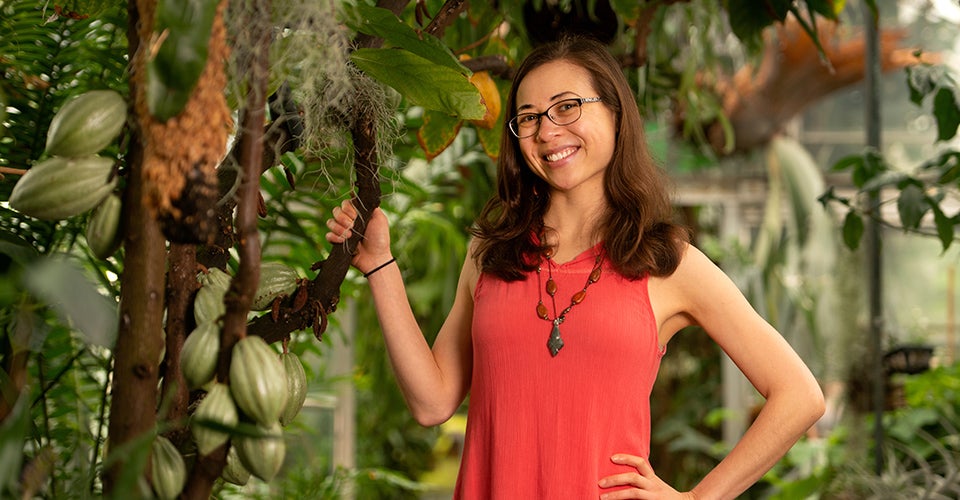
Cacao is a heritage food of Guatemala, so Weeks wanted to focus the project on specialty markets to highlight the unique quality of the cacao the smallholder producers grew and export it to the international market. Weeks partnered with the Guatemalan NGO, Fundación ProPetén to support the production and commercialization of cacao in Southern Petén.
The project had two goals: On the one hand, it empowered these communities to export their own cacao. “But the other very important aspect of the project was actually getting the women involved,” Weeks said.
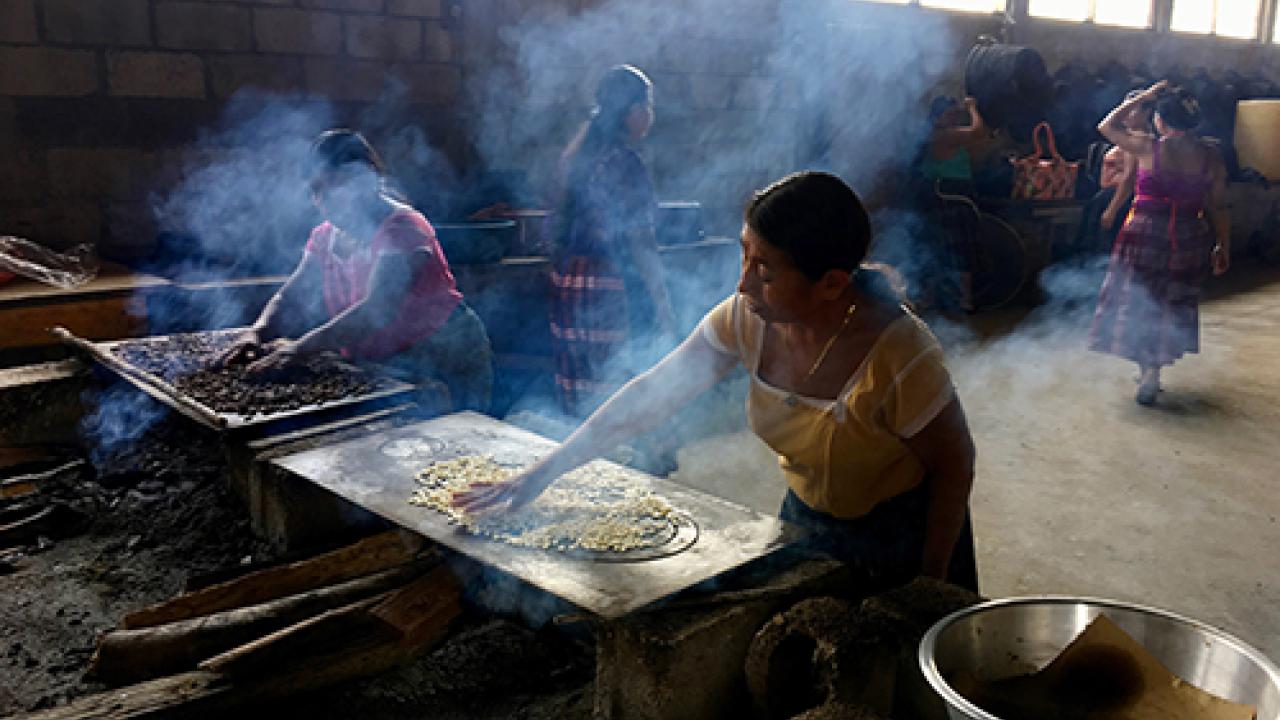
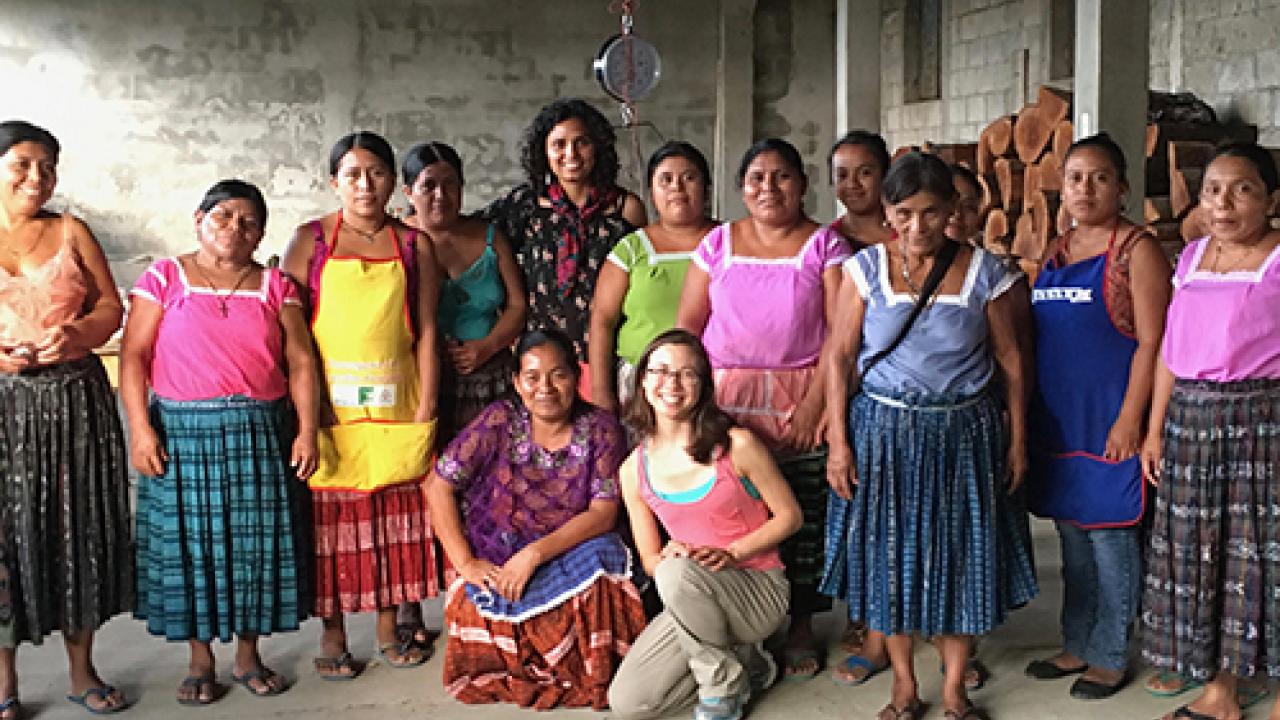
Strengthening community production
Through a Research and Innovation Fellowship for Agriculture (RIFA) grant from UC Davis, Weeks worked with a group of women called Red de Mujeres, who created a marketable product from the cacao they were already growing in their communities.
“[The Red de Mujeres] said part of what empowered them was knowing they could make their own chocolate,” Weeks said. “It’s embodying this concept of something that is from their heritage.”
Moreover, going beyond chocolate, together Weeks worked with the women's group to develop new recipes that slightly modified the traditional ones passed down from previous generations.
Weeks returned to Guatemala in 2017 through a Blum Center for a Developing Economies Grant, which enabled her to invite Northern California craft chocolate company, Cru Chocolate, to lead workshops centered around cacao-based recipes. With her first experience still fresh in her mind, she was thinking more clearly about cross-cultural conversations and learning more specifically about the interconnected concepts of health, food insecurity, and supply chain.
Weeks envisions future smallholder farms producing chocolate products in the same countries where the cacao is grown. She hopes that experiences like hers will help emphasize the need for considering the humans involved in making chocolate.
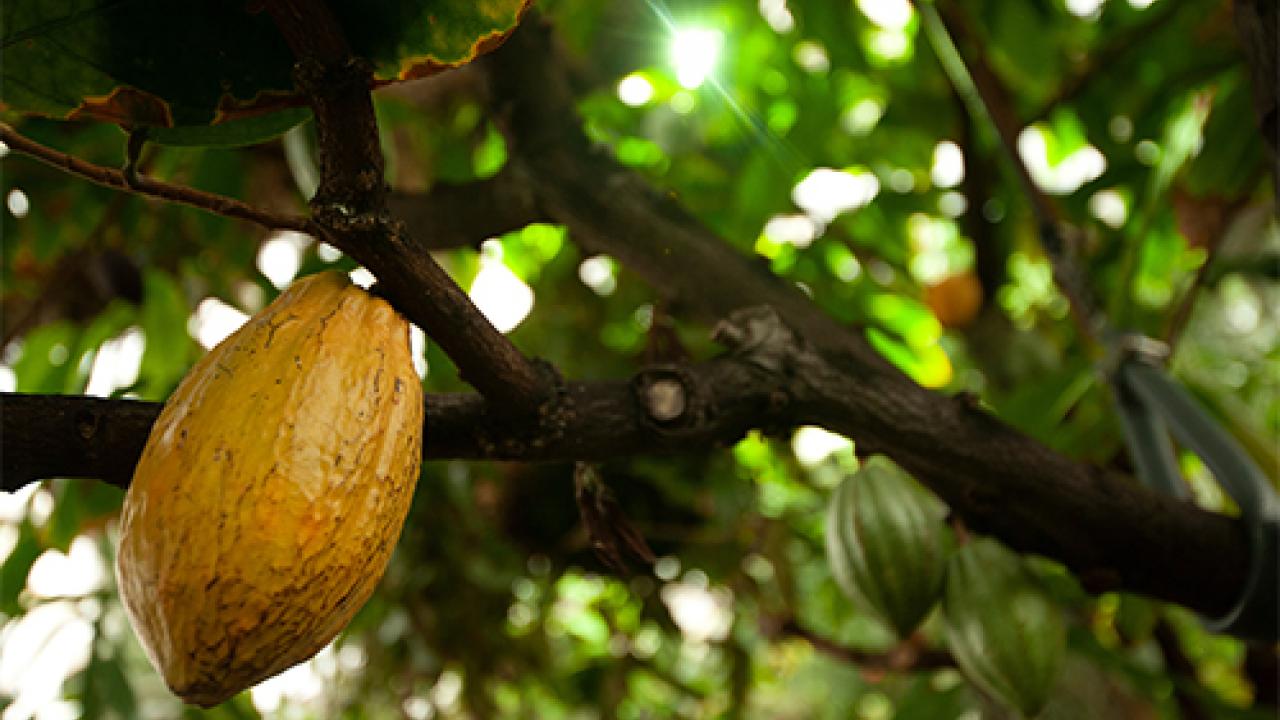
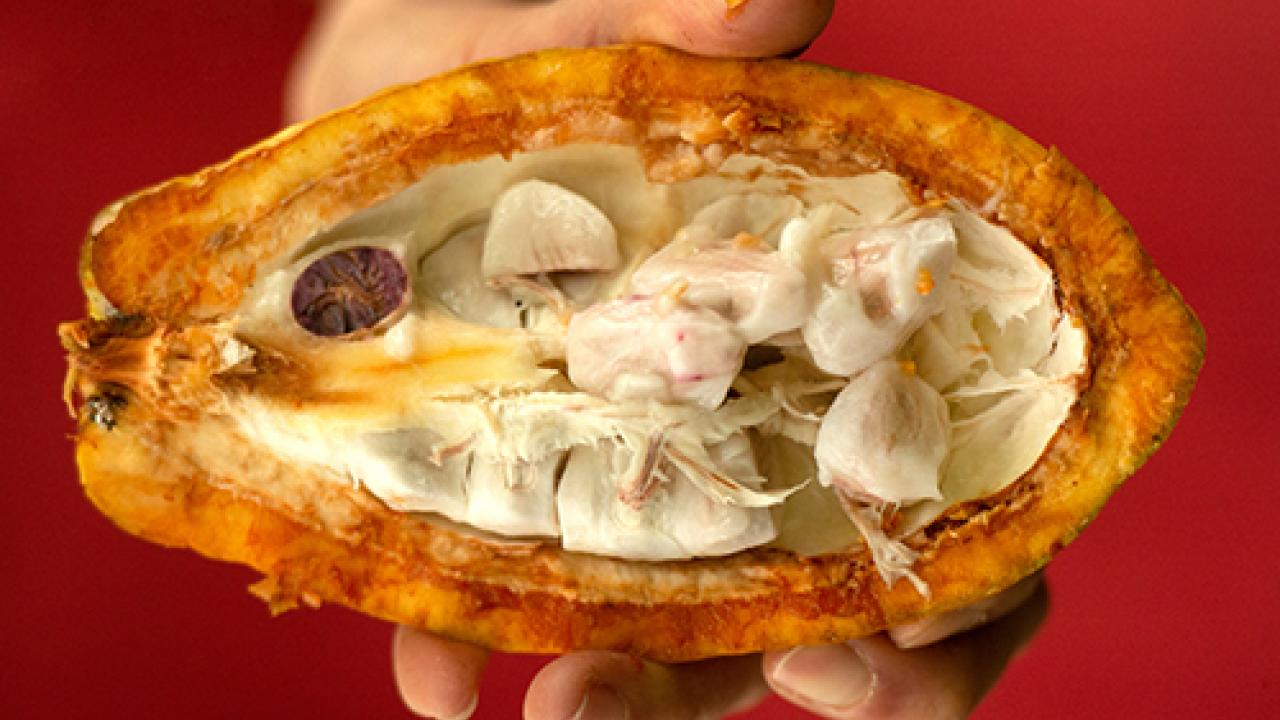
Growing solutions
As one UC Davis researcher explores the socio-economic aspects of cacao production, others are conducting long-term research at the university to explore genetic aspects of cacao production.
Growing cacao can be a delicate process, said Howard-Yana Shapiro, Senior Fellow in the UC Davis Plant Sciences Department and chief agricultural officer at Mars, Incorporated.
“There are pests and diseases in some parts of the world that can kill the crop in two or three years,” Shapiro said. These problems become worse with climate change.
The intermittent temperature change can determine the fate of an entire season’s cacao crop, Shapiro said. The bean is also prone to a litany of diseases and viruses, with ominous names like frosty pod and swollen shoot virus.
No one knows how, or if, cacao can thrive in an environment impacted by climate change, said adjunct UC Davis professor and plant geneticist David Mackill.
“I haven’t found many people who don't like chocolate, so I think there is going to be a continued demand for cacao,” Mackill said. The question is: will the cacao supply continue to be there?
Mackill and other plant experts at UC Davis are researching the answers to that question. They seek to improve cacao’s resiliency in areas impacted by climate change and drought, Mackill said. They hope to develop ways of ensuring cacao’s long-term production in ways that would also benefit farmers.
Shapiro said cacao forms the backbone for several countries’ economies, with some 6.5 million smallholders growing the crop worldwide. Inconsistent rainfall totals and erratic temperatures due to climate change reverberate throughout the entire sector.
After 10 years of observing the effects of climate change on cacao crops, Shapiro believes scientists are now better equipped to address the issue.
“We’re supposed to be guardians of (cacao),” Shapiro said. “We’ve raised the conversation to a point where there is a recognition the word ‘sustainable’ may not be the best word anymore; we need to have a resilient crop.”
Mackill and other UC Davis researchers address cacao production through major programs that address better soil, pest and disease management, as well as better breeding techniques to develop new strains of cacao that tolerate adverse climatic effects such as drought and higher temperatures.
“It depends on genetic variability in the species that we can use to develop new strains of cacao,” Mackill said.
Mackill and his colleagues will be working to develop new cacao strains to improve resilience to disease and climate change in new state-of-the-art greenhouses coming to UC Davis in 2019. The new greenhouses will support breeding, teaching and research on a diverse array of plant species, including cacao, which is rarely studied at public institutions.
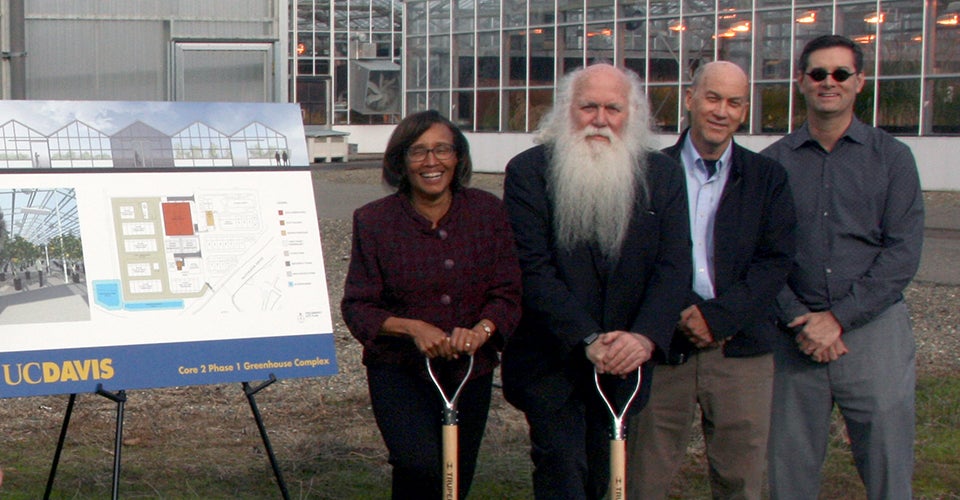
Some strains of cacao seem more naturally predisposed to tolerate higher temperatures than others, Mackill said.
“The real measure of drought tolerance is to actually compare the performance of different strains in the field condition under drought stress,” Mackill said.
Shapiro and Mackill expect these greenhouses will start conversations with scientists and farmers from all over the world about breeding, teaching, and researching hundreds of plants.
“This conversation is then not a factorial of ‘twice as good,’ it’s ten times as good to have that many eyes on it,” Shapiro said. “The ability to have that conversation is core to why we are on this campus.”
A large — and smallholder — future
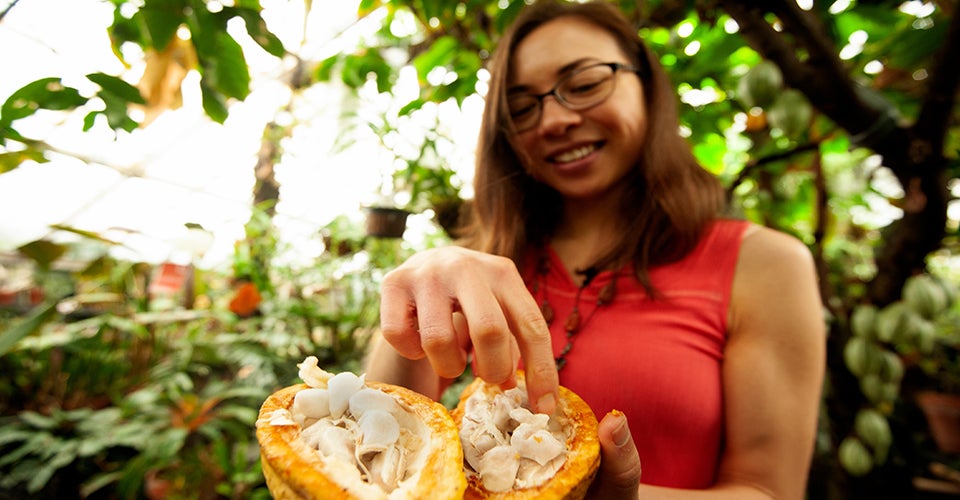
Meanwhile, Weeks wants to continue conversations with the smallholders who grow the cacao that eventually becomes chocolate. She believes the chocolate industry could improve the livelihood of smallholders like the ones she worked with in Guatemala.
“They’re still figuring it out, and I want to be part of that process,” Weeks said. “I came to chocolate with certain assumptions, and certain assumptions have been broken. I am constantly learning and shifting and adapting my own conceptions.”
Because chocolate has become a global product, it can be a conduit for talking about bigger issues like inequalities, Weeks said. In other words, she sees chocolate as a conversation starter, or at the very least, a means to bring people together.
“I have more empirical understandings of how chocolate makes me happy,” Weeks said. “I think part of it is being able to share that experience with other people.”

Media contact: Amy Quinton, UC Davis News and Media Relations, 530-752-9843, amquinton@ucdavis.edu
Related Stories

Closing the Loop on Sustainable Agriculture
Tsar Nicoulai is the first caviar farm in the world to produce food in an aquaponics system, which is a complete ecosystem that includes growing fish, plants and bacteria.
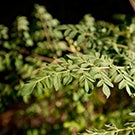
Moringa, the Next Superfood?
The "miracle tree," as it is sometimes described, shows great potential as a solution for a healthful, sustainable food supply for a rapidly growing global population.
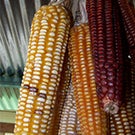
Can We Grow One of the World's Largest Food Crops Without Fertilizer?
A multidisciplinary team of researchers from UC Davis have discovered a variety of corn that can fix nitrogen from the atmosphere, instead of requiring synthetic fertilizers.
